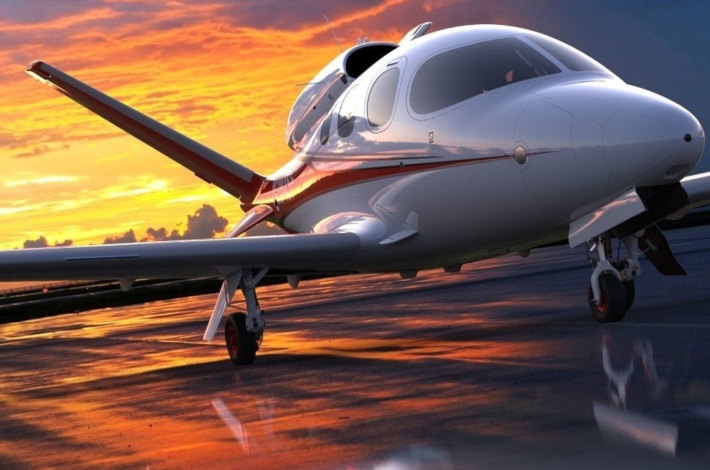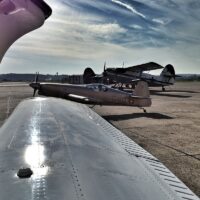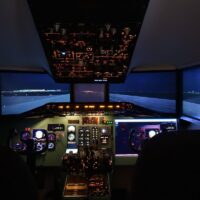
The Cirrus Vision Jet has a rich history that dates back to the early 2000s when Cirrus Aircraft, a renowned manufacturer of high-performance piston aircraft, identified an opportunity in the personal jet market. The company aimed to bring the same level of innovation, safety, and performance that had become synonymous with their piston aircraft to the world of jets.
To pursue this vision, Cirrus Aircraft established Cirrus Jet in 2006 as a dedicated division solely focused on designing and producing the Vision Jet. The team’s goal was to create a single-engine jet that would deliver exceptional performance, ease of operation, and enhanced safety features.
After years of meticulous design, engineering, and testing, the Cirrus Vision Jet SF50 achieved a significant milestone in October 2016 by receiving its type certificate from the Federal Aviation Administration (FAA). This certification marked the first time in over three decades that the FAA had certified a single-engine personal jet.
In December 2016, the Vision Jet made its first customer delivery, ushering in a new era of personal aviation. Since then, Cirrus Aircraft has continued to refine and enhance the Vision Jet based on customer feedback, further elevating its performance and capabilities.
The Vision Jet disrupted the aviation industry by providing a more accessible option for jet ownership. Its competitive price point, advanced technology, luxurious cabin, and exceptional safety features made it an attractive choice for owner-pilots, small businesses, and individuals seeking a personal jet experience.
Over the years, the Vision Jet has received numerous accolades and awards for its innovation, design, and impact on the aviation industry. This success has solidified Cirrus Aircraft’s position as a leader in general aviation and expanded the company’s presence in the personal jet manufacturing realm.
Today, the Cirrus Vision Jet remains a symbol of innovation and excellence, offering a unique combination of performance, safety, and comfort. Its remarkable history stands as a testament to the visionary team at Cirrus Aircraft who pushed the boundaries of what is possible in personal aviation.
Factors Influencing Fuel Burn in the Cirrus Vision Jet
The Cirrus Vision Jet is a revolutionary single-engine, low-wing aircraft that has made a significant impact in the aviation industry.
Several key aspects and features contribute to its distinction:
- Design and Performance: The Vision Jet boasts a sleek and modern design, featuring a distinctive V-tail configuration, large windows for improved visibility, and advanced aerodynamics. Powered by a Williams FJ33 turbofan engine, it offers impressive performance with a maximum cruise speed of approximately 345 knots (398 mph) and a range of around 1,200 nautical miles;
- Single-Pilot Operation: The Vision Jet is certified for single-pilot operation, eliminating the need for a co-pilot. This feature provides convenience and flexibility for owner-pilots or those who prefer flying solo;
- Cabin Comfort and Innovation: With a spacious and luxurious cabin accommodating up to five passengers, the Vision Jet prioritizes comfort. Premium materials, ergonomic seating, and large windows create an open and airy atmosphere. The aircraft also includes various amenities such as a modern avionics system, climate control, entertainment options, and a lavatory;
- Cirrus Perspective Touch+ Avionics: Equipped with the Cirrus Perspective Touch+ avionics system, the Vision Jet integrates advanced technology and user-friendly interfaces. The system comprises intuitive touchscreen displays, an integrated autopilot, synthetic vision, weather information, traffic awareness, and advanced navigation capabilities. These features enhance situational awareness and contribute to a safer and more efficient flight experience;
- Safety Features: Safety remains a top priority for Cirrus, reflected in the Vision Jet’s incorporation of several safety features. The aircraft is equipped with the Cirrus Airframe Parachute System (CAPS), a ballistic parachute system that can safely lower the entire aircraft to the ground in emergency situations. Advanced stall prevention and recovery systems, stability and protection systems, and high-performance anti-ice systems further enhance safety;
- Vision Jet SF50: The official designation of the Cirrus Vision Jet is Vision Jet SF50, emphasizing its single-engine jet status. This distinction highlights its unique positioning in the market, combining jet-like performance with the ease of operation typically associated with piston-powered aircraft;
- Market Disruption: The Vision Jet has disrupted the market by offering an entry-level jet with innovative features and a competitive price point compared to traditional business jets. It has expanded opportunities for individuals, owner-pilots, and small businesses to experience the benefits of jet travel without the complexity and high costs typically associated with jet ownership.
Efficient Fuel Management Strategies in the Cirrus Vision Jet
The Cirrus Vision Jet has earned recognition for its cutting-edge design, performance, safety features, and advanced avionics. It has captivated aviation enthusiasts, owner-pilots, and those seeking a more accessible entry into private jet travel. The Vision Jet’s combination of efficiency, comfort, and innovative features solidifies its status as a significant player in the aviation industry.
In terms of jet fuel, the aviation industry offers various types and brands. Commonly used types include:
- Jet A: Widely used in the United States and many parts of the world, Jet A is a kerosene-based fuel that meets ASTM specifications. Known for its high energy content, Jet A is suitable for a wide range of aircraft;
- Jet A-1: Similar to Jet A but with a slightly lower freezing point, Jet A-1 is widely used in Europe, Asia, and other regions. It also meets ASTM specifications and is more resistant to cold temperatures, making it suitable for colder climates;
- Jet B: Primarily used in cold regions that require low-temperature performance, Jet B has a higher volatility and lower flash point compared to Jet A and Jet A-1. It possesses a higher energy content but is less common.
Reputable brands producing high-quality jet fuel include:
- Shell Aviation: A global leader in aviation fuel production and distribution, Shell Aviation offers a range of jet fuel products tailored to different aircraft and operations. Shell Aviation fuels are known for their quality, reliability, and adherence to industry standards;
- ExxonMobil Aviation: Another major player in the aviation fuel market, ExxonMobil offers a variety of jet fuel products carefully formulated for optimal performance, efficiency, and environmental sustainability. These fuels are widely used by airlines and operators worldwide;
- BP Aviation: BP, a well-established brand in the aviation fuel industry, supplies high-quality jet fuels globally. BP Aviation fuels are engineered to deliver efficient and reliable performance, meeting the stringent requirements of the aviation industry;
- Chevron Aviation: A trusted name in the energy sector, Chevron’s aviation division provides jet fuel products developed to deliver exceptional performance, efficiency, and safety, addressing the demanding needs of modern aircraft.
These examples represent just a few of the types and brands of jet fuel available in the market. The choice of fuel depends on factors such as aircraft specifications, operating conditions, and regional availability. Pilots and operators typically select a fuel type and brand that align with their specific requirements and comply with industry standards and regulations.
Conclusion
The Cirrus Vision Jet’s combination of innovation, performance, and efficiency makes it a compelling choice for pilots and operators. By understanding the factors that influence fuel burn and implementing efficient fuel management strategies, operators can optimize the aircraft’s performance and achieve maximum range.
Factors such as weight, altitude, speed, and flight profile should be taken into account when making decisions to minimize fuel consumption and maximize fuel efficiency in the Cirrus Vision Jet. Efficient fuel management not only enhances the aircraft’s capabilities but also contributes to cost savings, reduced environmental impact, and an overall enhanced flying experience.
With its advanced technology, luxurious cabin, and outstanding safety features, the Cirrus Vision Jet continues to embody excellence in the aviation industry. By prioritizing fuel efficiency and implementing effective fuel management practices, pilots can fully harness the capabilities of the Vision Jet and experience the benefits of this exceptional aircraft.

